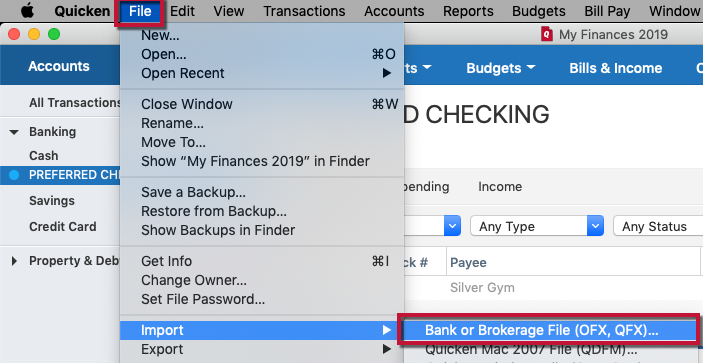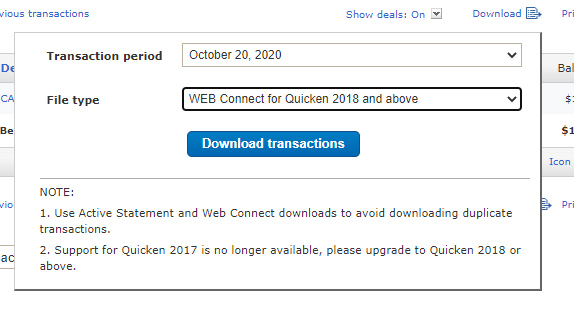To import QIF into Quicken (to import a QIF file into Quicken 2005-2014, 2015, 2016, 2017, 2018, 2019, 2020, 2021), you need to create a correct QIF file and follow the instructions below.

Once Excel is open, select File Export and choose the QIF format (note: that’s Quicken format). Now that you have your chart of accounts and vendor lists, you can begin transferring the account into Quicken format. Located the previously saved files on your desktop or hard drive and open them using Microsoft Excel. Copy and paste your QuickBooks Desktop information into your Quicken (.QIF) file. Open the.IIF file (right-click the file, then select Open with Choose Program Microsoft Office Excel). Note: The QIF import is not available for checking, savings, credit cards, 401(k), and other brokerage accounts. This was replaced within a.QFX import file. See a step-by-step tutorial at the Transactions app (https://www.propersoft.net/products/transactions).

QIF and QFX format
Quicken imports QIF and QFX (Web Connect) files with transactions. Once Quicken becomes three years old, it stops import QFX (Web Connect) files. Investing in a converter that creates QIF files from your CSV or OFX or QFX or QBO files is a good idea because you keep using your Quicken version until you see features worthy upgrade to new Quicken version.
QXF format


There is also QXF files that you do not want. Unlike QFX (Web Connect) and QIF files, QXF replace whole data file and can create only from another Quicken that is the same year and the same platform (PC/Mac) as you have. QIF and QFX (web connect) files add transactions to your Quicken file, not replace them.
Yes, Quicken says QIF files are not supported, but yes, QIF files correctly prepared are importable directly into bank or credit account in Quicken. Import QIF into Quicken gives you the ability to supply transactions, as QFX (Web Connect) format does not provide them.
QIF files should be created either by the Transactions app, which converts from more formats and converts to more formats, CSV2QIF - CSV to QIF converter - or Bank2QIF - Bank to QIF Converter - or PDF2QIF - you can use Bank2QIF to ‘fix’ your QIF as well.
Importing .qif File Into Quicken Deluxe 2018 Online
Quicken 2005-2017, 2018-2021? You are fine
Quicken 2005, 2006, 2007, 2008, 2009, 2010, 2011, 2012, 2013, 2014, 2017, 2018, 2019, 2020, 2021 imports QIF files fine for all account types. Your QIF file must be correctly created to import directly into an account you need it to import, and CSV2QIF helps you create such QIF files.
When you convert a CSV file to QIF using CSV2QIF, enter the account name exactly as you have in Quicken and select the account type (Bank for checking and savings accounts, CCard for credit card accounts, Invest for investment accounts).
When you convert a bank file (OFX, QFX, QIF, QBO) to QIF using Bank2QIF (Bank to QIF Converter), load the file and click on the Account Mapping tab and enter the account name as you have in Quicken for each listed account.
Once you saved the QIF file, do the following:
Start Quicken and click File, then File Import, then QIF file.
On the import screen, select from the account drop-down list. Ignore the Quicken message about QIF limitations.
Review your imported transactions (Done!).
What about Quicken 2015 and 2016?
Importing .qif File Into Quicken Deluxe 2018 Free
Quicken 2015, 2016 have the limitation with QIF import for bank and credit card accounts. You have to use a workaround with a proxy cash account, import transactions there, and then move transactions under a bank or credit account. There a separate tutorial for this conversion and import.